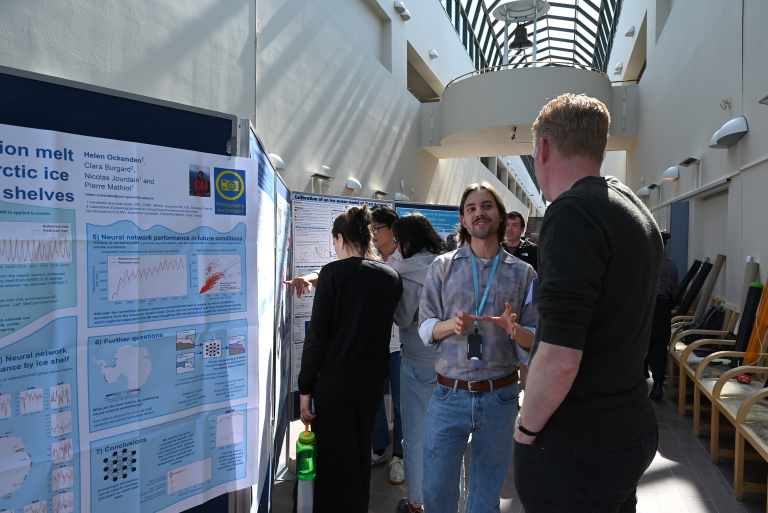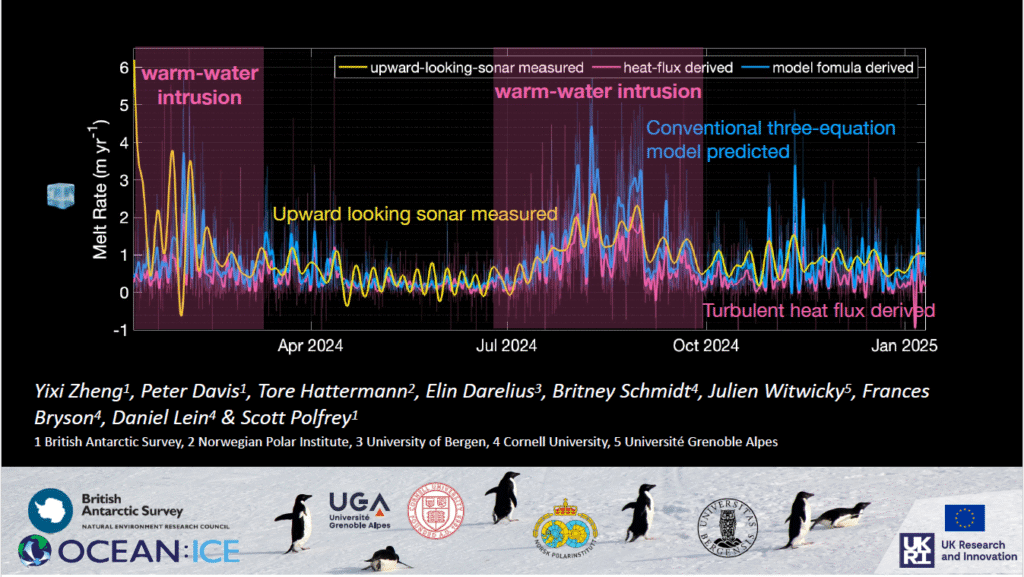Shenjie Zhou: Pan-Antarctic mooring compilation and a new Southern Ocean climatology
Two unique datasets were presented at FRISP, developed with support from OCEAN ICE as part of WP1. The first dataset is the inaugural pan-Antarctic compilation of mooring time series, consisting of 521 records from 470 mooring sites across the continental shelf, shelf break, and under-ice shelf regions around Antarctica. Energy spectral analysis reveals dominant tidal motions at semi-diurnal, diurnal, and fortnightly frequencies, along with strong non-tidal variability at timescales longer than synoptic. Notably, non-tidal kinetic energy is found to be significantly higher on cold shelves compared to warm shelves, indicating distinct spatial patterns. A preprint of this dataset is available on Earth System Science Data. The second dataset is a newly constructed Southern Ocean climatology, based on a comprehensive compilation of hydrographic profiles also completed under WP1. The methodology incorporates the dynamic connectivity driven by ocean circulation across different spatial scales and regions, enabling more effective use of the increasingly heterogeneous hydrographic observations in the Southern Ocean.


Yixi Zheng: Turbulence Observations beneath Fimbul Ice Shelf
Yixi Zheng1, Peter Davis1, Tore Hattermann2, Elin Darelius3, Britney Schmidt4, Julien Witwicky5, Frances Bryson4, Daniel Lein4 & Scott Polfrey1
1 British Antarctic Survey, 2 Norwegian Polar Institute, 3 University of Bergen, 4 Cornell
University, 5 Université Grenoble Alpes
Antarctic ice shelves are losing mass rapidly, primarily due to oceanic melting, introducing significant uncertainties in future sea-level projection. The melt rate of ice shelves largely controlled by the turbulent transfer of heat within the ice-ocean boundary layer, a process yet poorly understood due to limited observations. During 2023-2024 season, we deployed two mooring strings beneath the Fimbul Ice Shelf, positioned above a basal channel, and obtained a year-long time series of key ocean properties. Here we present the estimated turbulent dissipation rate, as well as temperature, salinity and velocity measurements near the ice base. The turbulent heat fluxes derived from these observations account for the majority of the melt observed at the Fimbul Ice Shelf, and the melt rate model we apply reproduces the temporal melting pattern captured by observations. Our results will provide new insights of the features of turbulence beneath ice shelves, and how they affect the ice shelf melt rate - critical for improving predictions of ice shelf response to a warming climate.

The author of the article - Shenjie Zhou and Yixi Zheng (British Antarctic Survey)


